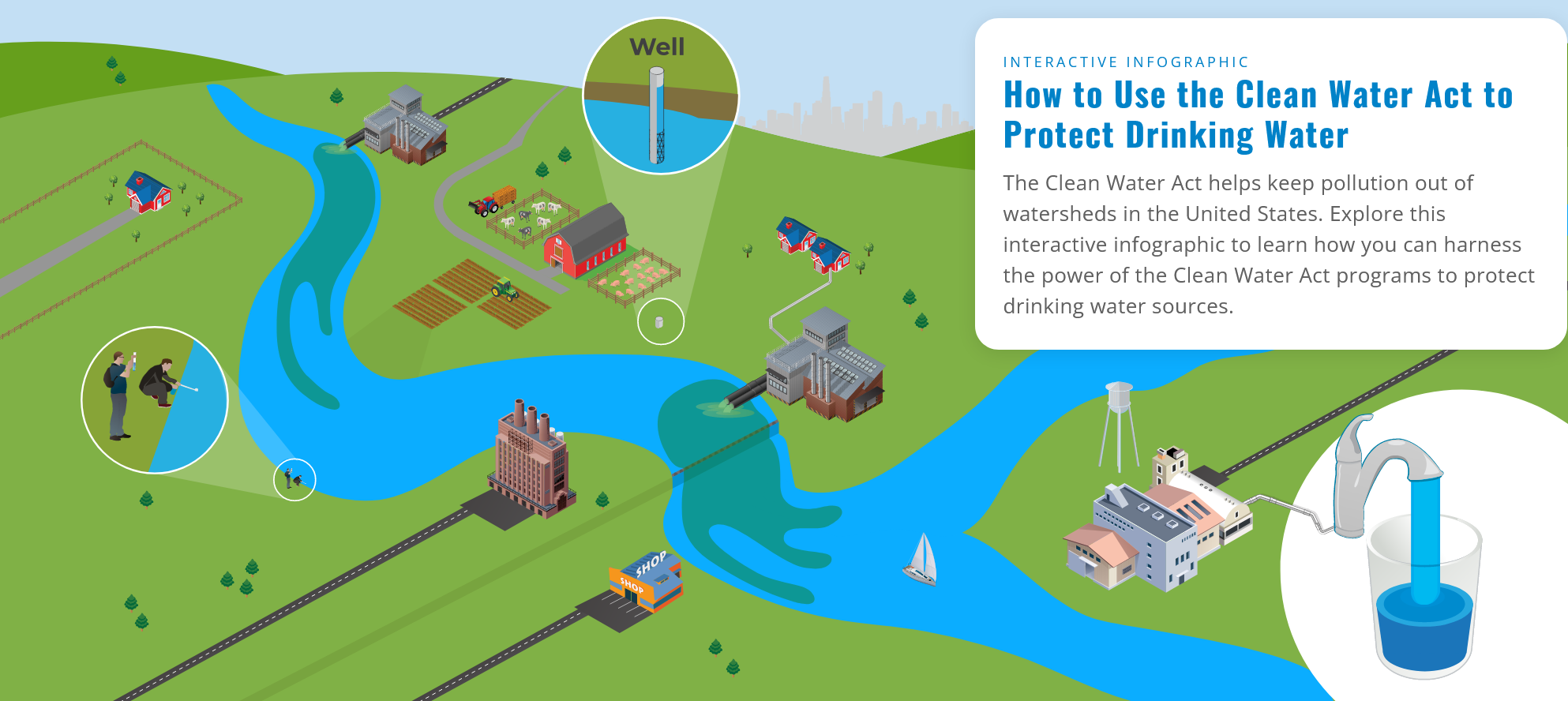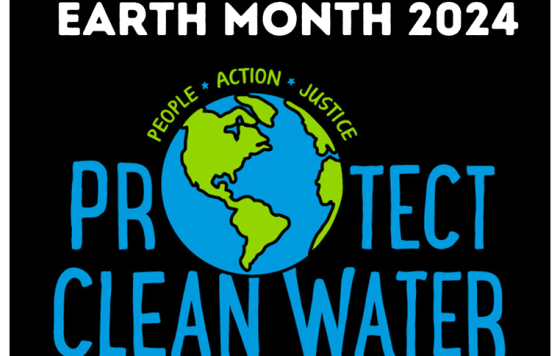
You might think that we harness the Clean Water Act, meant to reduce and eliminate water pollution, to protect our drinking water sources. It would make sense that preventing pollution from getting into water bodies where we get our drinking water would save water system customers money and perhaps simplify the complicated treatments we use to make the water safe to drink.
That would make sense, but it’s not what is happening. We can and should do more to put the Clean Water Act to work to protect our drinking water. That’s where the Source Water Collaborative comes in. Founded in 2006, the Source Water Collaborative brings everyone from water utility associations to environmental organizations to planning professionals together to elevate the need to protect drinking water sources in decisions at the local, state and federal levels.
In honor of the Clean Water Act’s 50th anniversary, the Source Water Collaborative updated its online interactive infographic that explains how people can engage in the Act’s water pollution programs to get better results for drinking water protection.
Here’s an example of why public engagement, which is a key part of the Clean Water Act, is so important for protecting drinking water. Entities that discharge pollutants into rivers, lakes, and streams are required to have a permit. These are issued under the Act’s National Pollution Elimination Discharge System (NPDES) permit program, and are overseen by state agencies or the Environmental Protection Agency (EPA), depending on the state. The idea behind these permits is to limit pollution to what science tells us technology can achieve AND what the water body can handle to protect people, wildlife, and overall water quality. The word “Elimination” is there because the idea is also to reduce water pollution over time until it is actually eliminated. Regulators have to renew these permits every five years, and public engagement in this process is an important part of the program. But often, there is barely any participation by those who might be able to point out the need to look closer at and revise the permits. This engagement helps regulatory agencies identify concerns, including drinking water impacts.
The Source Water Collaborative’s tools help watershed organizations, drinking water systems, and others who are concerned about drinking water quality to navigate the process and get involved when permits are up for renewal. This seems daunting, but it doesn’t have to be. Invigorating participation in Clean Water Act programs is critical for the next 50 years of success in addressing water pollution, and it will lead to cleaner drinking water. Explore the Source Water Collaborative’s new interactive infographic here.



